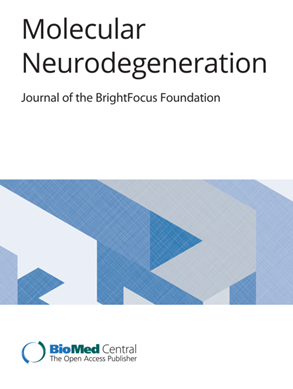Cellular and molecular mechanisms of pathological tau phosphorylation in traumatic brain injury: implications for chronic traumatic encephalopathy
IF 17.5
1区 医学
Q1 NEUROSCIENCES
引用次数: 0
Abstract
Tau protein plays a critical role in the physiological functioning of the central nervous system by providing structural integrity to the cytoskeletal architecture of neurons and glia through microtubule assembly and stabilization. Under certain pathological conditions, tau is aberrantly phosphorylated and aggregates into neurotoxic fibrillary tangles. The aggregation and cell-to-cell propagation of pathological tau leads to the progressive deterioration of the nervous system. The clinical entity of traumatic brain injury (TBI) ranges from mild to severe and can promote tau aggregation by inducing cellular mechanisms and signalling pathways that increase tau phosphorylation and aggregation. Chronic traumatic encephalopathy (CTE), which is a consequence of repetitive TBI, is a unique tauopathy characterized by pathological tau aggregates located at the depths of the sulci and surrounding blood vessels. The mechanisms leading to increased tau phosphorylation and aggregation in CTE remain to be fully defined but are likely the result of the primary and secondary injury sequelae associated with TBI. The primary injury includes physical and mechanical damage resulting from the head impact and accompanying forces that cause blood–brain barrier disruption and axonal shearing, which primes the central nervous system to be more vulnerable to the subsequent secondary injury mechanisms. A complex interplay of neuroinflammation, oxidative stress, excitotoxicity, and mitochondrial dysfunction activate kinase and cell death pathways, increasing tau phosphorylation, aggregation and neurodegeneration. In this review, we explore the most recent insights into the mechanisms of tau phosphorylation associated with TBI and propose how multiple cellular pathways converge on tau phosphorylation, which may contribute to CTE progression.外伤性脑损伤中病理性tau磷酸化的细胞和分子机制:对慢性外伤性脑病的影响
Tau蛋白通过微管组装和稳定提供神经元和胶质细胞骨架结构的结构完整性,在中枢神经系统的生理功能中起着至关重要的作用。在某些病理条件下,tau异常磷酸化并聚集成神经毒性纤维缠结。病理性tau的聚集和细胞间繁殖导致神经系统的进行性恶化。创伤性脑损伤(TBI)的临床实体从轻度到重度不等,可通过诱导细胞机制和增加tau磷酸化和聚集的信号通路来促进tau聚集。慢性创伤性脑病(CTE)是重复性TBI的结果,是一种独特的tau病,其特征是病理性tau聚集位于脑沟深处和周围血管。导致CTE中tau磷酸化和聚集增加的机制仍未完全确定,但可能是与TBI相关的原发性和继发性损伤后遗症的结果。原发性损伤包括由头部撞击和伴随力量引起的血脑屏障破坏和轴突剪切造成的物理和机械损伤,这使得中枢神经系统更容易受到随后的继发性损伤机制的影响。神经炎症、氧化应激、兴奋性毒性和线粒体功能障碍的复杂相互作用激活了激酶和细胞死亡途径,增加了tau磷酸化、聚集和神经变性。在这篇综述中,我们探索了与TBI相关的tau磷酸化机制的最新见解,并提出了多种细胞途径如何汇聚在tau磷酸化上,这可能有助于CTE的进展。
本文章由计算机程序翻译,如有差异,请以英文原文为准。
求助全文
约1分钟内获得全文
求助全文
来源期刊

Molecular Neurodegeneration
医学-神经科学
CiteScore
23.00
自引率
4.60%
发文量
78
审稿时长
6-12 weeks
期刊介绍:
Molecular Neurodegeneration, an open-access, peer-reviewed journal, comprehensively covers neurodegeneration research at the molecular and cellular levels.
Neurodegenerative diseases, such as Alzheimer's, Parkinson's, Huntington's, and prion diseases, fall under its purview. These disorders, often linked to advanced aging and characterized by varying degrees of dementia, pose a significant public health concern with the growing aging population. Recent strides in understanding the molecular and cellular mechanisms of these neurodegenerative disorders offer valuable insights into their pathogenesis.
 求助内容:
求助内容: 应助结果提醒方式:
应助结果提醒方式:


